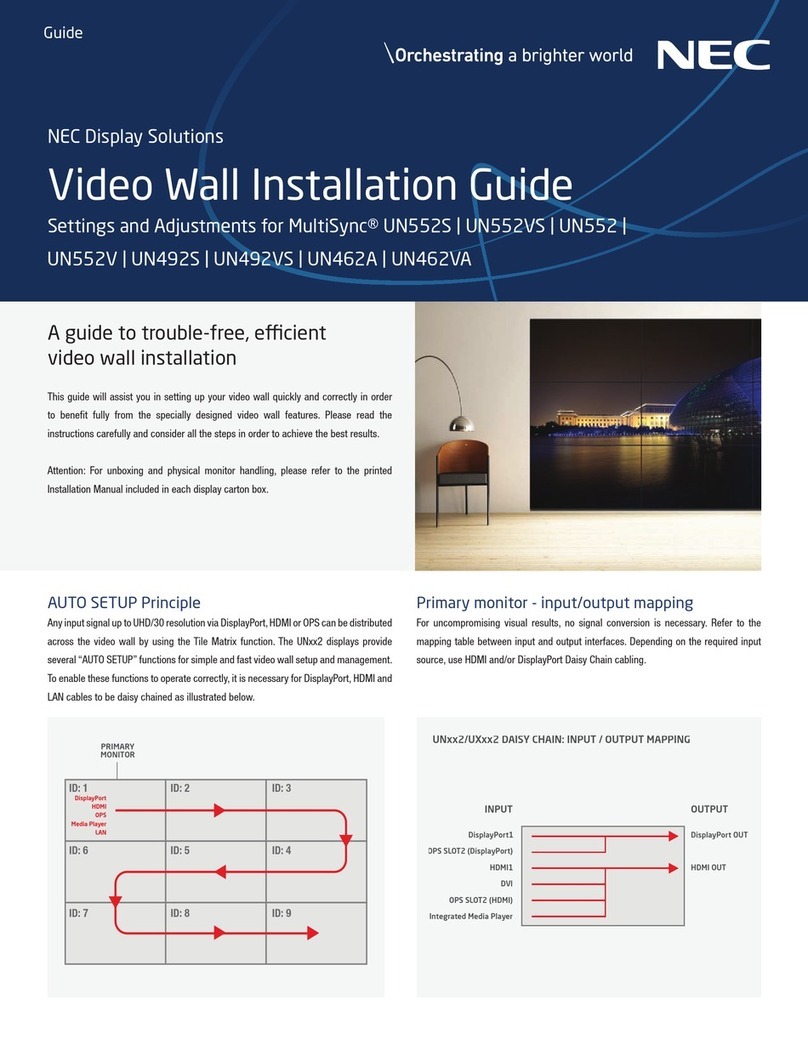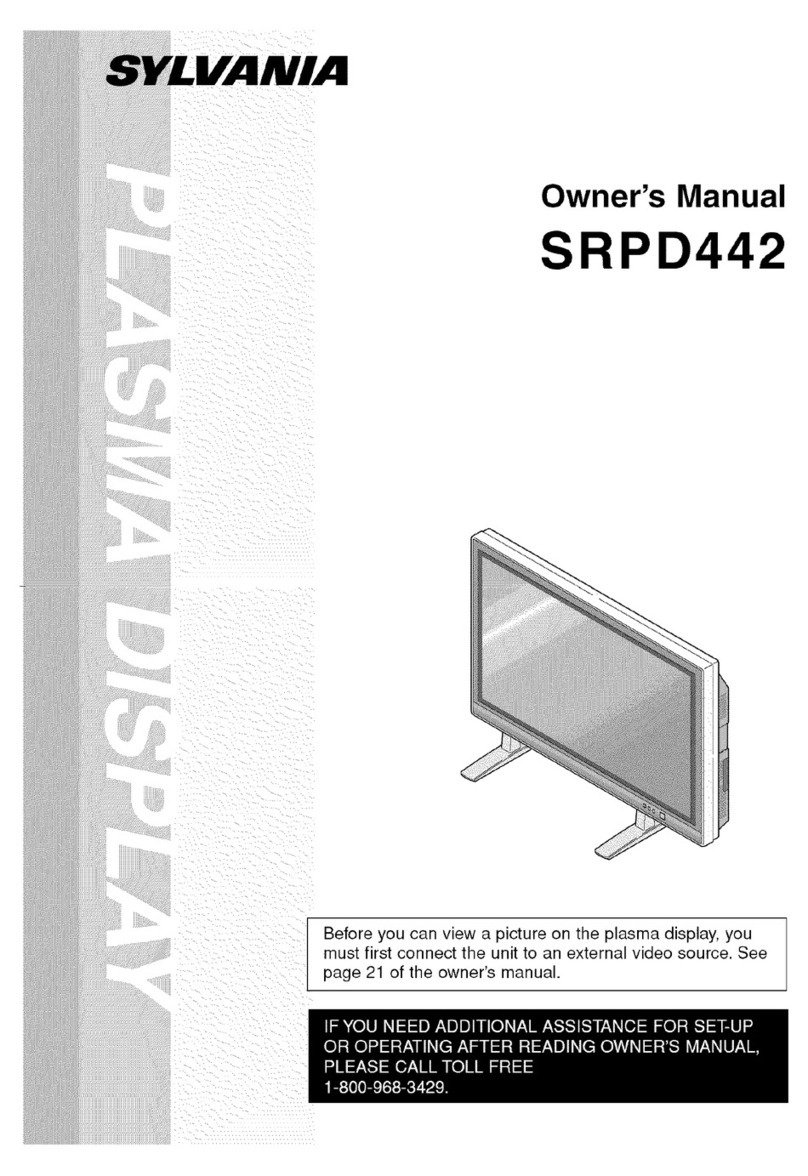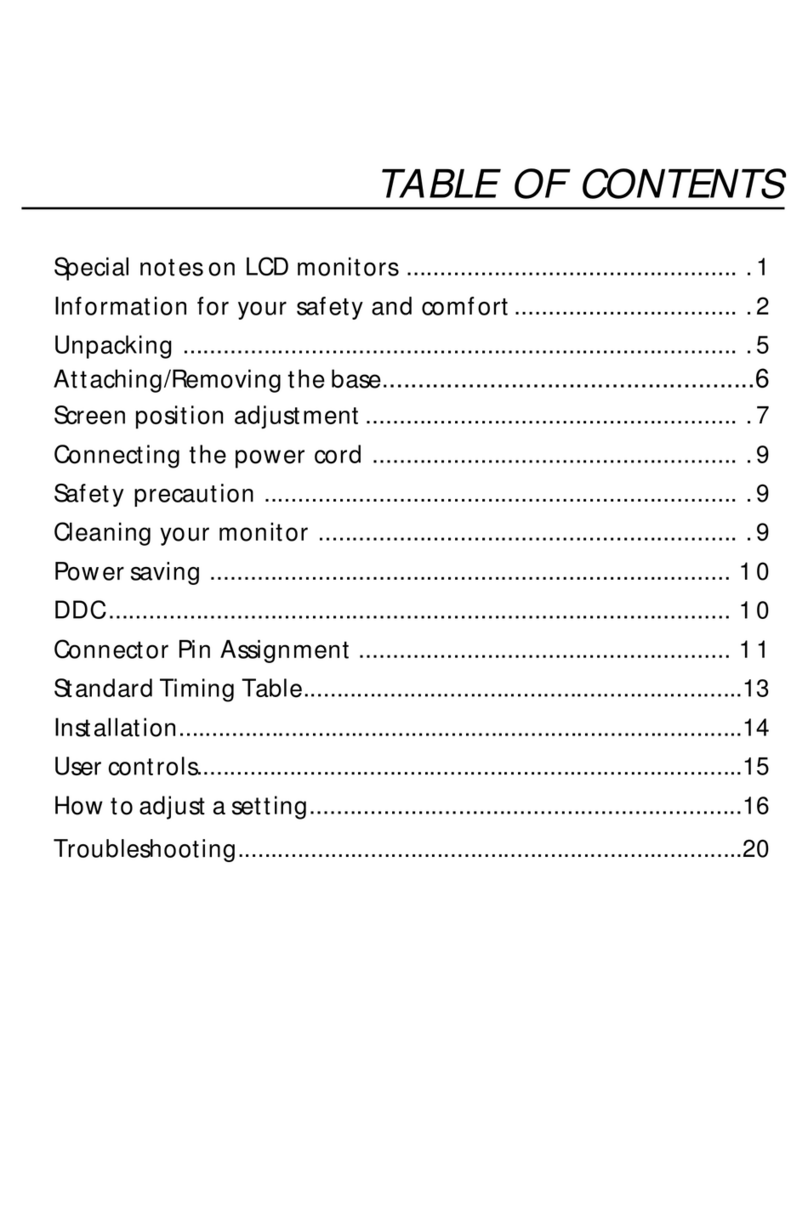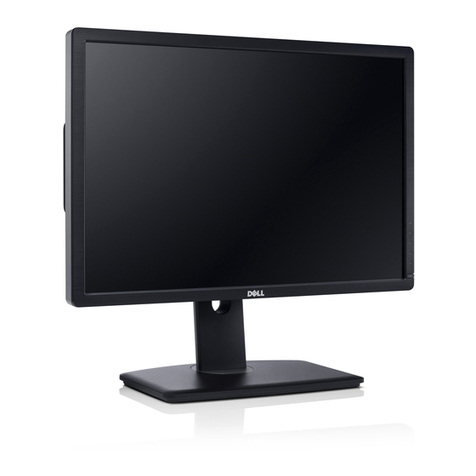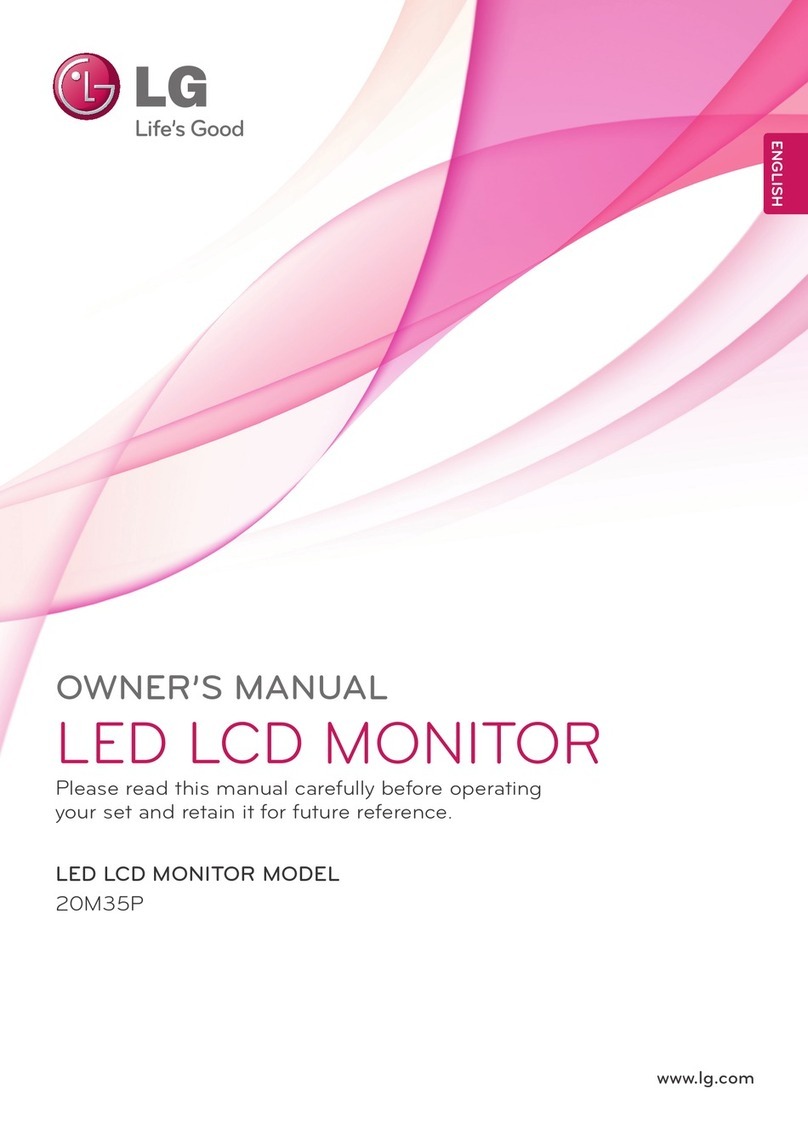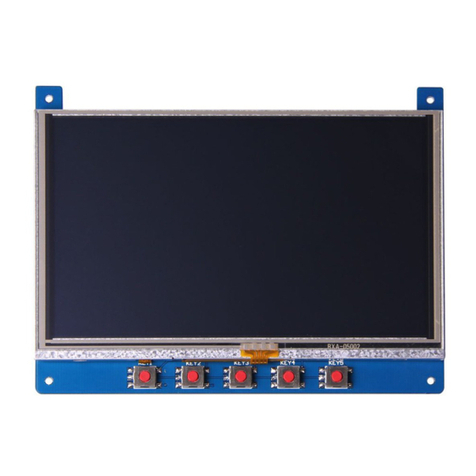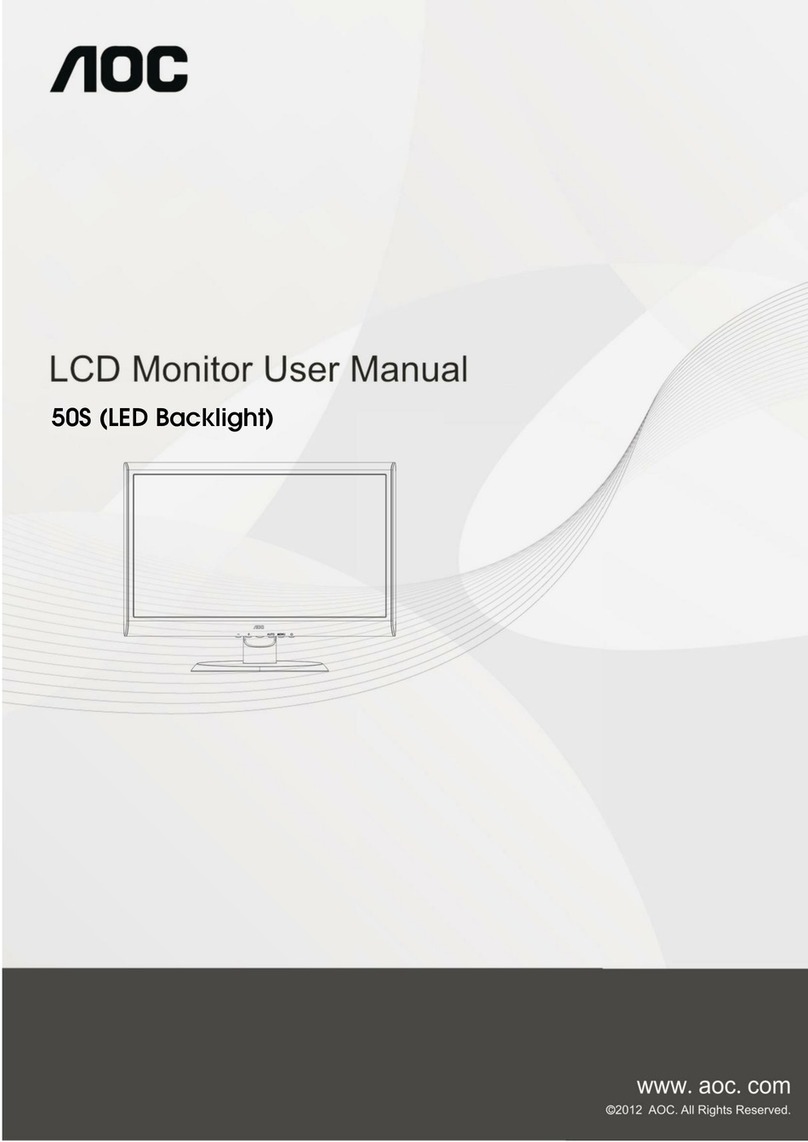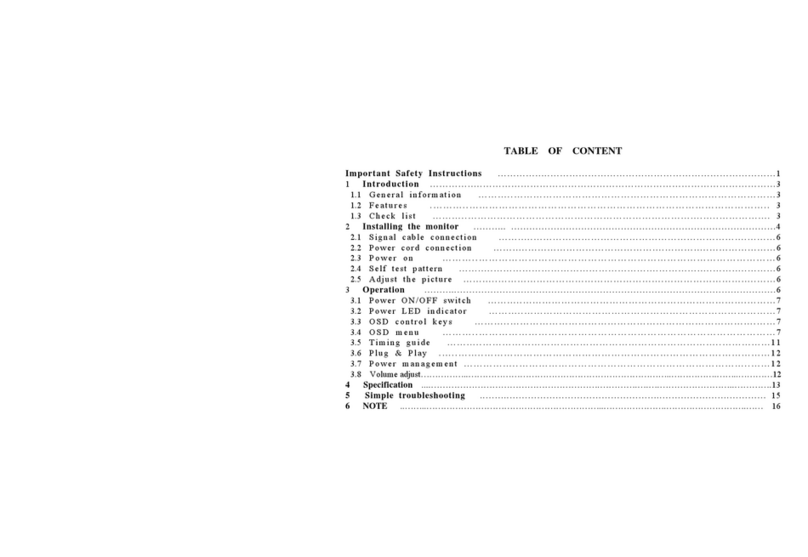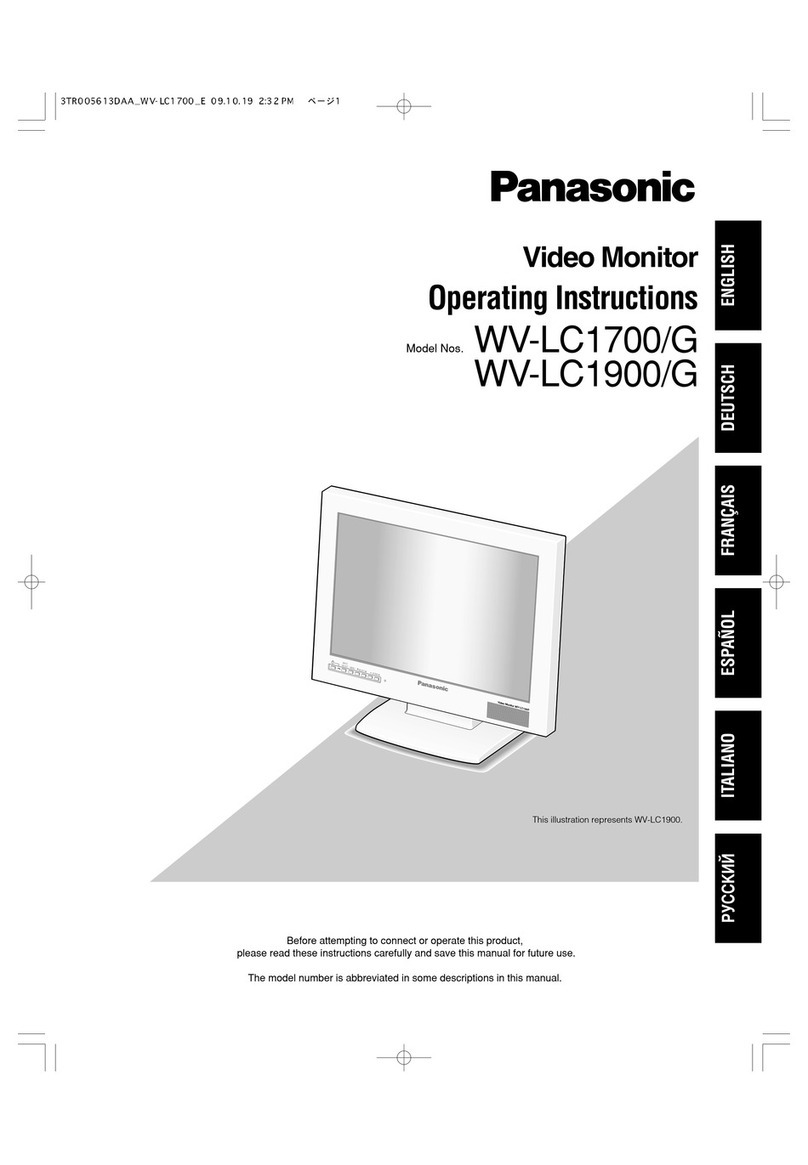Forbes Marshall CODEL EnergyTech 300 Series Guide

www.codel.co.uk
Page: 1
© 2010 CODEL International Ltd.
CODEL
300
Issue: A | Revision: 9 | Date: 15/10/21 | Reference: 100246
Installation, Commissioning, Operating and
Maintenance Manual
For EnergyTech 301 and EnergyTech 302
Triboelectric Dust Air Quality Monitors
CODEL International Ltd.
Unit 4, Station Road, Bakewell, Derbyshire DE45 1GE United Kingdom
300 Series

Section 1
The EnergyTech 300 Series
Page: 2
CODEL
A Forbes Marshall Company
Issue: A | Revision: 9 | Date: 15/10/21 | Reference: 100246

www.codel.co.uk
Page: 3
© 2010 CODEL International Ltd.
CODEL
300
CODEL International Ltd is a UK company based in the heart of the Peak District National Park at Bakewell,
Derbyshire. The company specialises in the design and manufacture of high-technology instrumentation for the
monitoring of combustion processes and atmospheric pollutant emissions.
The constant search for new products and existing product improvement keeps CODEL one step ahead. With a
simple strategy, to design well-engineered, rugged, reliable equipment, capable of continuous operation over
long periods with minimal maintenance, CODEL has set standards both for itself and for the rest of the industry.
All development and design work is carried out ‘in-house’ by experienced engineers using proven state-of-the-
art CAD and software development techniques, while stringent assembly and test procedures ensure that the
highest standards of product quality, synonymous with the CODEL name, are maintained.
High priority is placed upon customer support. CODEL’s dedicated team of field and service engineers will assist
with any application problem to ensure that the best possible use is derived from investment in CODEL quality
products.
If you require any further information about CODEL or its products, please contact us using one of the numbers
below or alternatively visit our web site.
t : +44 (0) 1629 814 351
f : +44 (0) 8700 566 307
web : www.codel.co.uk

Section 1
The EnergyTech 300 Series
Page: 4
CODEL
A Forbes Marshall Company
Issue: A | Revision: 9 | Date: 15/10/21 | Reference: 100246

www.codel.co.uk
Page: 5
© 2010 CODEL International Ltd.
CODEL
300
Contents
Contents
1THE ENERGYTECH 300 SERIES........................................................................................................................................ 9
1.1 CONTINUOUS INDICATIVE PARTICULATE MONITORING ....................................................................................................10
2SPECIFICATION.................................................................................................................................................................. 11
1.2 MEASUREMENTS ............................................................................................................................................................... 11
1.3 OUTPUTS .......................................................................................................................................................................... 11
1.4 ELECTRONICS ENCLOSURE............................................................................................................................................12
1.5 INTRUSIVE PROBE..............................................................................................................................................................12
1.6 CABLING (IF SUPPLIED BY CODEL) .....................................................................................................................................12
3PRINCIPLES OF OPERATION ..........................................................................................................................................13
4DESCRIPTION.....................................................................................................................................................................14
1.7 POWER SUPPLY (ET302 ONLY).........................................................................................................................................15
5INSTALLATION...................................................................................................................................................................16
1.8 SELECTING A SUITABLE SENSOR LOCATION ......................................................................................................................16
1.9 INSTALLING THE MOUNTING STUB....................................................................................................................................18
Steel Stacks................................................................................................................................................................... 18
1.10 THIN-WALLED STACKS................................................................................................................................................19
1.11 MOUNTING THE SENSOR ............................................................................................................................................20
EnergyTech 301:.....................................................................................................................................................20
EnergyTech 302:..................................................................................................................................................... 20
1.12 WIRING THE MAINS CONNECTOR................................................................................................................................21
ET302 Power Connector ............................................................................................................................................21
ET301 Power Connector ............................................................................................................................................21
1.13 OUTPUT CONNECTOR .................................................................................................................................................22
Volt Free Output......................................................................................................................................................... 22
24V Output .................................................................................................................................................................. 22
Optional –RS485 looped with output connection, for maintenance only. ................................................. 23
1.13.1 24V and Volt Free Output Selection...................................................................................................................... 23
1.14 WIRING TO POWER PCB CONNECTORS......................................................................................................................24
1.14.1 EnergyTech 301........................................................................................................................................................... 24
1.14.2 EnergyTech 302...................................................................................................................................................... 24
6COMMISSIONING............................................................................................................................................................25
POWER-UP................................................................................................................................................................................25
1.15 ZERO CALIBRATION.....................................................................................................................................................26
1.16 INSITU SPAN CALIBRATION (HARDWARE GAIN SETTING):............................................................................................27
1.17 TRANSFER FACTOR (DUST FACTOR) ............................................................................................................................ 28
1.17.1 CF_m (Transfer Factor) ............................................................................................................................................. 28
1.17.2 CF_c (Offset Factor)....................................................................................................................................................29
1.19 ANALOGUE (MA) OUTPUT CONFIGURATION: ..............................................................................................................31
1.20 CONTACT OUTPUT: ....................................................................................................................................................33

Section 1
The EnergyTech 300 Series
Page: 6
CODEL
A Forbes Marshall Company
Issue: A | Revision: 9 | Date: 15/10/21 | Reference: 100246
1.21 DAMPING....................................................................................................................................................................35
7MAINTENANCE ................................................................................................................................................................36
1.22 CLEANING INTERVAL ...................................................................................................................................................36
1.23 BRIDGING ....................................................................................................................................................................36
1.24 SERIOUS INSTRUMENT FAILURE ................................................................................................................................... 37
8APPENDIX 1 ....................................................................................................................................................................... 38
1.25 STANDARD MODBUS COMMUNICATION WITH CODEL MODBUS ........................................................................38
Host Request Frame ..................................................................................................................................................38
Slave Response (from CODEL MODBUS SCU)...................................................................................................39
1.26 MODBUS LIST ...........................................................................................................................................................40
9APPENDIX 2 - REVISION & AMENDMENT REGISTER ...............................................................................................41
10 APPENDIX-3: MEMORY MAP ........................................................................................................................................42
1.27 GENERAL.....................................................................................................................................................................42
1.28 COMMS RAM ..........................................................................................................................................................43
1.29 COMMS EEPROM...................................................................................................................................................53
1.30 COMMANDS LIST ........................................................................................................................................................69
1.31............................................................................................................................................................................................69

www.codel.co.uk
Page: 7
© 2010 CODEL International Ltd.
CODEL
300
IMPORTANT
The warning signs (and meanings) shown below, are used throughout these instructions and are intended to
ensure your safety while carrying out installation, operation and maintenance procedures. Please read these
instructions fully before proceeding.
Caution, risk of danger or damage.
WARNING!
Caution, risk of electric shock.
WARNING!
Earth (ground) terminal
EARTH
Attention, important information
NOTE
Caution, Hot surfaces
HOT SURFACE!

Section 1
The EnergyTech 300 Series
Page: 8
CODEL
A Forbes Marshall Company
Issue: A | Revision: 9 | Date: 15/10/21 | Reference: 100246

www.codel.co.uk
Page: 9
© 2010 CODEL International Ltd.
CODEL
300
1The EnergyTech 300 Series
The EnergyTech 301 and 302 are low-cost dust monitors using well-proven
technology providing accurate and rapid results.
Being adaptable it can can be used on duct sizes from 250mm to 5m making the
EnergyTech 301 a suitable sensor for a wide range of applications where a dust
measurement is required A low cost dust monitor using well-proven technology
providing accurate and rapid results. Being adaptable it can can be used on duct
sizes from 250mm to 5m making the EnergyTech 301 a suitable sensor for a wide
range of applications where a dust measurement is required
The EnergyTech 301 continuous dust monitor uses the well-proven tribo-electric
sensor technology to directly measure mass particulate concentration by sensing
the frictional charge created when particles collide with a conductor.
The advanced electronics of the EnergyTech 301 detect this signal and present it
to the operator via RS485 or 4-20mA directly out from the sensor head. The
EnergyTech 201 also features a built-in display for viewing live sensor data as well
as for configuration and calibration.
The measurement levels can be corrected to mg/m3 via an integrated calibration
function. The tribo-electric technique is extremely sensitive, capable of detecting
dust concentrations of less than 1mg/m3 in small ducts. The EnergyTech 301
requires no critical alignment and has no optical surfaces to keep clean. The sensor
is easy to install, requiring only a simple probe and is ideal for small duct sizes.
Minimal maintenance is required, infrequent probe cleaning and low installation
costs make this technology extremely attractive for dust collector monitoring.

Section 1
The EnergyTech 300 Series
Page: 10
CODEL
A Forbes Marshall Company
Issue: A | Revision: 9 | Date: 15/10/21 | Reference: 100246
1.1 Continuous Indicative Particulate
Monitoring
With the recent increase in world-wide environmental legislation, there has evolved
a general requirement for operators to monitor the performance of their dust
collectors and ensure that emissions to atmosphere are kept below the maximum
legal enforcement level.
In the case of small collectors or non-critical processes, it has been accepted by
legislators in the UK, that low cost continuous indicative particulate monitors may
be used. These devices give an output that shows the operator a relative increase
or decrease in dust loading and have the facility to initiate alarms if an
unacceptable level is exceeded. Such instruments are described as ‘indicative’ and
are not intended to give quantitative results. They are normally set up using
subjective criteria and without reference to a standard gravimetric stack test
The better indicative monitors, such as Energy Tech 301, have an analogue and
RS485 output that can be used to constantly record the output from the instrument
and enable the operator to review the results and identify impending filter failure
at an early stage. The results may also be used to show evidence of good practice
to environmental authorities.
Whilst it is not recommended to calibrate this class of instrument in mg/m3, the
operator may wish to set an alarm point with reference to a specific mass
concentration of particulate required by law. This manual will show a method that
satisfies this requirement using a single iso-kinetic stack test.
If emissions are required to be quantified in mg/m3 on a continuous basis, then
please contact Codel for advice.

www.codel.co.uk
Page: 11
© 2010 CODEL International Ltd.
CODEL
300
2Specification
1.2 Measurements
Operating principle
Tribo Electric
Measurement units
mg/m3
Temperature range, Flue:
-20oC to +200oC
Temperature range, Ambient:
-20oC to +55oC
Measurement range
0 –100% / 0.00 - 6500mg/m3 (Dependent upon Transfer Factor)
Particle size range
0.1 to 100µm
Gain
1 –1000
Resolution
0.01% / 0.1mg/m3
Response time
1 second –1 hour (operator selectable)
1.3 Outputs
Analogue outputs
4-20mA opto-isolated active
Digital outputs
RS485 Modbus Bi-directional
Alarm outputs
Alarm relay 2.5A @ 24V / Contact Alarm
Connections
IP67 4-way plug and socket
IP67 7-way plug and socket

Section 2
Specification
Page: 12
CODEL
A Forbes Marshall Company
Issue: A | Revision: 9 | Date: 15/10/21 | Reference: 100246
1.4 Electronics enclosure
Material
Aluminium casting, Epoxy paint finish in Traffic Blue (RAL5010)
Weatherproofing
Designed to IP67 standard
Menu addressable items
Damping, Sensitivity, Alarm level
Power requirements
EnergyTech 301: 85 –265V A.C. 25 VA, 0.25 A Max
EnergyTech 302: 24V DC 100mA
Display
32-character alpha-numeric back-lit 16 x 2 LCD
Status LEDs
Flashing green LED - where the pulse duration increases with dust level
Red alarm LED
dimensions
1.5 Intrusive Probe
Material
Stainless steel bar Ø12mm2 (Grade 316L)
Available lengths
250, 500, 750, 1000mm (customer requirement)
Probe protection
insulating sleeve on first 200mm of probe
The Energy Tech 301 is normally fitted with a stainless steel (Grade 316L) probe.
However, on certain processes, it may be necessary to use probes of a different
material, e.g. tungsten carbide where the particulate is of an abrasive nature, or
Inconel for corrosive gases. If there is any doubt as to the suitability of the stainless-
steel probe, contact Codel, giving full details of the process application, and we will
be pleased to help.
1.6 Cabling (if supplied by Codel)
Mains Cable
3-core, PVC insulate 24/0.2mm
Output Cable
8-core PVC insulated, screened, 16/0.2mm Ø9.5mm maximum. Core colours -
green, brown, yellow, violet, white, black, red and blue (not used).
if the cable length is greater than 1km it is recommended to use cable spec 0.75mm2~24/0.2. If unsure, please
contact Codel.
WARNING!

www.codel.co.uk
Page: 13
© 2010 CODEL International Ltd.
CODEL
300
3Principles of Operation
When a particle moving in a duct collides with (or passes near) a probe that is
grounded to earth, a transfer of charge takes place from the particle to the
conductor. This is known as tribo-electricity or frictional electrification and results
in a charge being imparted to the probe.
The main advantages of tribo-electric instruments are as follows:
•They are extremely sensitive to fine dusts and are sensitive over a range of
<1mg/m3up to 2500mg/m3.
•They are able to detect particulates in a size range of 0.1 to 100 m.
•They are easy to install and do not require critical alignment.
•They have no optical surfaces to keep clean.
•Energy Tech 301 is easy to remove and clean and has very low
maintenance requirements.
•There are no moving parts and consequently servicing requirements are
very low.

Section 4
Description
Page: 14
CODEL
A Forbes Marshall Company
Issue: A | Revision: 9 | Date: 15/10/21 | Reference: 100246
4Description
The Energy Tech 301 continuous indicative particulate monitor consists of a
stainless-steel intrusive probe attached to a robust aluminium enclosure that
contains the electronics to amplify and process the incoming signal. The key
feature of the unit is its compactness, as all the electronics and display are
contained within the head. Furthermore, the Energy Tech 301 is designed to be
easy to install and commission.
The static charge caused by the particulate is conducted down the probe to the
electronics module where it is amplified and then conditioned. The Energy Tech
301 incorporates damping circuitry, manually adjustable by the operator, to
‘smooth’ the output of the instrument to suit application conditions, for example,
to prevent spurious alarms caused by cleaning events within the collector. The
analogue output signal is also provided with adjustable smoothing to
accommodate different application conditions
The instrument has two visual displays. A flashing green LED pulses proportional
to the dust level (i.e. it pulses more as the dust level increases and less as the dust
level decreases). A constant red LED is activated when the high-level dust alarm
threshold is exceeded.
A 4-20mA output is available for analogue data-logging and a user selectable volt-
free or 24V SPCO relay for activating an external visible or audible alarm at high
dust levels.
One of the main concerns about tribo-electric systems has been an effect called
‘bridging’, where conductive material builds up on the probe eventually making
contact with the duct wall, effectively ‘shorting-out’ the probe and producing an
alarm. This has been overcome by other manufacturers by incorporating a high-
pressure air purge, that continually blasts air down the length of the probe. Whilst
this may prevent bridging, it also prevents particulate from impinging on the probe
with a consequential loss of signal. The Energy Tech 301 incorporates an insulated
sheath attached to the probe, allowing the bridge to form without shorting-out
the probe.
Figure 1: Energy Tech 301 –Full system
Probe
Mounting Boss
Sensor Head
Insulation Sheath

www.codel.co.uk
Page: 15
© 2010 CODEL International Ltd.
CODEL
300
1.7 Power Supply (ET302 only)
The EnergyTech 302 requires a PSU to convert the mains (90-263V AC) supply to
the 24V DC required by the analyser.
A Codel 24V DC PSU can be optionally provided to power an EnergyTech 302.
Figure 2: Optional CODEL 24V DC PSU
Optional CODEL PSU
Input:
110 - 240V AC @ 100W Max., 50/60 Hz
Output:
24V DC @ 60W
Dimension:
200 (L) x 230 (H) x 110 (D) (mm)
Colour:
Black (RAL9005 - Jet Black)
Construction:
Die-cast Aluminium
Enclosure Rating:
IP66
Weight:
4.0 kg
Mains Input
Connection
24V DC outputs
24V DC
Earthing bolt

Section 5
Installation
Page: 16
CODEL
A Forbes Marshall Company
Issue: A | Revision: 9 | Date: 15/10/21 | Reference: 100246
5Installation
1.8 Selecting a Suitable Sensor Location
There are several factors to consider when selecting the position to mount the
Energy Tech 301 unit. These are, in order of importance:
•Are there any legal constraints that might restrict its location?
For indicative monitors this is unlikely, but it’s worthwhile checking. There are no
such constraints in the UK and USA.
•The probe must protrude more than halfway into the duct to ensure good
sensitivity.
•Choose a location where there is unrestricted flow path and where the probe is
within the main flow of particulate. Ideally, the unit should be placed 5 duct
diameters upstream (or downstream) from any obstruction such as a bend, fan,
damper, duct exit or pipe junction, as illustrated in Figure 2.
In practice of course, it is not always easy to select a location 5 duct diameters
from an obstruction, so some compromise may be necessary. If this is the case,
Figure 3 shows alternative mounting strategies.
•Energy Tech 301 should be located where maintenance staff can occasionally
gain easy access.
•The unit should not be located where it is vulnerable to knocks. Nor should it be
mounted close to steam traps or other sources of extreme heat.
•Energy Tech 301 should not be placed on the bottom of a horizontal duct as dust
and debris will soon accumulate around the base of the probe, leading to
bridging.
•Energy Tech 301 should be placed well away from any iso-kinetic sampling ports
if possible.
•If the dust level display is required to be viewed regularly to confirm acceptable
levels, if possible, install the Energy Tech 301 where the display can be easily seen
by plant operators

www.codel.co.uk
Page: 17
© 2010 CODEL International Ltd.
CODEL
300
Avoid mounting Energy Tech 301 on a vertical duct that vents to atmosphere as it
may be affected by rain ingress.
Figure 4: Energy Tech 301 -
Alternative Mounting Strategies
Figure 3: Energy Tech 301 -
Preferred Locations

Section 5
Installation
Page: 18
CODEL
A Forbes Marshall Company
Issue: A | Revision: 9 | Date: 15/10/21 | Reference: 100246
1.9 Installing the Mounting Stub
Manufacture the mounting stub shown in Figure 4. Normally this would be in mild
steel but check the construction material of the stack or duct. If this is stainless
steel for example, consider using the same material, but ensure he use of an
appropriate welding rod, as failure to do so could present welding problems and
cause eventual weld weakness or failure.
Cut a hole Ø28mm (11/8 ins) at the selected location and offer up the stub.
Paint the stub with a suitable corrosion resistant paint, prior to mounting the
Energy Tech 301.
If the stack wall is thin gauge and will not weld easily or will not bear the weight of
the probe, follow the method below.
Steel Stacks
Figure 5: Detail of Stack
Mounting Stub
We strongly advise that the dust collector be turned off, especially when drilling holes or welding the stub. The
duct may be under pressure and debris and air under pressure will be ejected through any hole and could damage
eyes or may be swallowed. If you must work on the collector when it is online, suitable eye protection and a
breathing mask must be worn.
WARNING!
DO NOT attempt to weld the stub to the stack with the probe attached to the stub, as the heat generated (and
the electric arc) will severely damage the probe and electronics.
WARNING!
Ensure the stub remains at 900 to the stack, but DO NOT weld when the collector is online, as the weld pool may
super-cool, and cracking may result.
WARNING!

www.codel.co.uk
Page: 19
© 2010 CODEL International Ltd.
CODEL
300
1.10 Thin- Walled Stacks
Manufacture a stub as described above. Prepare the mounting plate shown in
Figure 5. Cut a hole Ø28mm (11/8 ins) at the centre and drill for large pop rivets
or self-tapping screws. Bend the plate to the curvature of the stack and weld the
stub to the plate as outlined above.
Drill a hole Ø28mm (11/8 ins) in the stack. Offer up the plate and drill the securing
holes.
Before securing the plate to the stack, coat its underside with a silicon sealer to
ensure that the plate does not allow any leakage. Paint the stub and mounting
plate with a suitable corrosion resistant paint.
Figure 6: Mounting Plate for Thin-
Walled Stacks
DO NOT attempt to weld the stub to the plate with the probe attached to the stub as the heat generated (and
the electric arc) will severely damage the probe and electronics.
WARNING!
It is important to make the plate as large as possible to improve its load bearing capabilities.
WARNING!
If the probe is to be installed on a non-metallic duct, it will be necessary to install an electrostatic (Faraday) shield
around the area of the duct where the probe resides. The shield should be of copper and connected to the
enclosure by means of the earth plug at the front of the enclosure and then on to ground. The shield will ensure
that the probe does not detect any stray electrical fields.
WARNING!

Section 5
Installation
Page: 20
CODEL
A Forbes Marshall Company
Issue: A | Revision: 9 | Date: 15/10/21 | Reference: 100246
1.11 Mounting the Sensor
The Energy Tech 301 itself is supplied in two parts, the head and the probe. Cable
and cable plugs are supplied as loose items. First attach the probe to the head by
placing the threaded end (it’s an ordinary RH thread) through the brass fitting and
screw in place. Insert a rod or screwdriver through the hole in the sensor probe
and ‘nip it up’.
Remove the front part of the brass fitting from the probe (leaving the lock nut and
compression gland on the probe), and screw onto the mounting stub. Coat the
thread in copper grease to ensure easy removal. DO NOT use insulating tape as
this will prevent the instrument grounding to earth via the boss.
Offer up the probe to the mounting stub and tighten the locknut. DO NOT over-
tighten as the unit will need to be removed occasionally for maintenance purposes.
Ensure that the unit is positioned with the two LED’s horizontal, and with the
electrical connection sockets at the bottom.
EnergyTech 301:
Figure 7: ET301 System Schematic
EnergyTech 302:
Figure 8: ET302 System Schematic
Mains In:
85 –265V A.C. 25 VA, 0.25 A Max
Optional Extra
Junction Box
Customer
monitoring
system
24V DC
Optional Extra
Junction Box
Customer
monitoring
system
24V DC In:
This manual suits for next models
2
Table of contents

